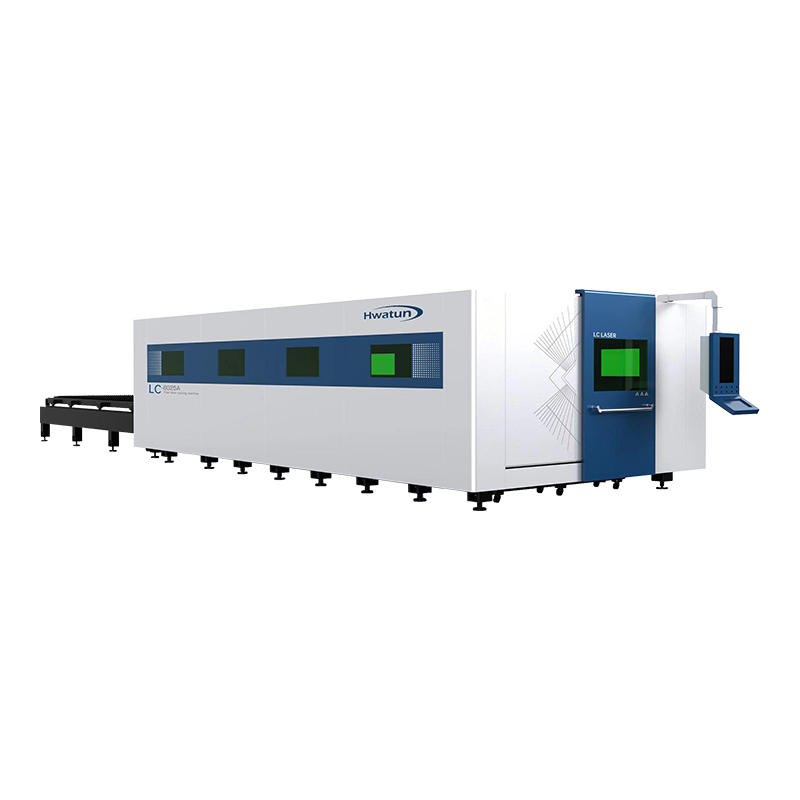Web Menu
Product Search
Exit Menu
Analysis of the advantages of CNC Laser Cutting Machine in sheet metal processing
1. High Precision and Accuracy
One of the most significant advantages of using a CNC (Computer Numerical Control) laser cutting machine in sheet metal processing is its exceptional precision and accuracy. These machines operate based on programmed digital instructions, allowing for tight tolerances and consistent part quality. With laser beams capable of focusing on extremely small areas, CNC laser cutters can produce intricate shapes and fine details that traditional machining methods struggle to achieve. This level of precision ensures that each cut meets exact design specifications, reducing material waste and rework.
2. Enhanced Efficiency and Productivity
CNC laser cutting machines significantly improve production efficiency in sheet metal fabrication. Unlike manual or semi-automated methods, CNC systems operate continuously with minimal human intervention once programmed. The automated process allows for faster setup times and quicker turnaround of parts. Additionally, these machines can run multiple shifts without compromising consistency or quality, making them ideal for both prototyping and high-volume production runs. The integration of CAD/CAM software further streamlines operations by enabling direct translation of digital designs into cutting paths, minimizing errors and saving time.
3. Versatility in Material and Design Flexibility
CNC laser cutting machines are highly versatile and capable of cutting a wide range of metallic materials, including stainless steel, aluminum, copper, brass, and various alloys. This flexibility makes them suitable for diverse industries such as automotive, aerospace, electronics, and architecture. Moreover, the non-contact nature of laser cutting eliminates mechanical wear and deformation, preserving material integrity. Designers also benefit from the ability to easily modify digital blueprints and rapidly implement changes without requiring new tooling, enhancing innovation and customization capabilities.
4. Reduced Labor Costs and Minimal Tooling Requirements
Traditional cutting methods often require extensive manual labor and frequent tool changes, increasing both time and cost. In contrast, CNC laser cutting machines automate the entire cutting process, significantly reducing the need for skilled labor per unit produced. Since lasers do not require physical tools like blades or dies, there are no tooling costs or maintenance associated with wear and tear. This results in lower operational expenses and increased long-term cost-effectiveness, especially for complex or frequently updated designs.
5. Superior Edge Quality and Minimal Post-Processing
The focused laser beam produces clean, smooth edges with minimal burring or distortion, which reduces or even eliminates the need for secondary finishing processes. This advantage not only saves time but also lowers overall manufacturing costs. High edge quality also contributes to better weldability and improved aesthetics, which are crucial in industries where appearance and performance are equally important.
6. Space Efficiency and Integration with Smart Manufacturing
Modern CNC laser cutting machines are designed to be compact and integrate seamlessly into smart manufacturing environments. They can be easily connected to other production systems via IoT and Industry 4.0 technologies, enabling real-time monitoring, predictive maintenance, and data-driven decision-making. Their space-saving design allows manufacturers to optimize factory layouts and increase throughput without expanding facilities.
CNC laser cutting machines offer numerous advantages in sheet metal processing, including unmatched precision, high productivity, material versatility, reduced labor costs, superior edge quality, and compatibility with modern manufacturing systems. As industries continue to demand higher quality, faster production cycles, and greater customization, the adoption of CNC laser technology becomes increasingly essential for staying competitive in today’s market.
News categories
Product categories
Related Products
 +86-159 5138 1316
+86-159 5138 1316 +86 180 6819 3096
+86 180 6819 3096 [email protected]
[email protected] Group 4, Xinba Village, Binhai New Area (jiaoxie Town), Laoba Port, Nantong City, Jiangsu, China.
Group 4, Xinba Village, Binhai New Area (jiaoxie Town), Laoba Port, Nantong City, Jiangsu, China.
Copyright © Nantong Hwatun Heavy Machine Tool Co., Ltd. All Rights Reserved.

 Eng
Eng  简体中文
简体中文 Español
Español русский
русский







